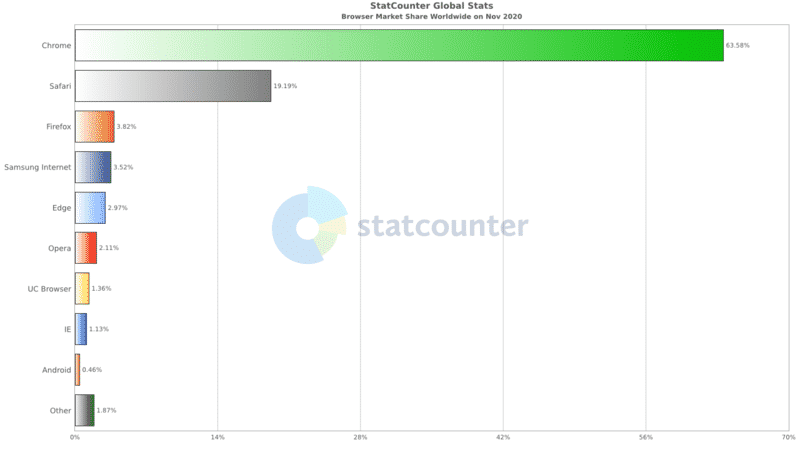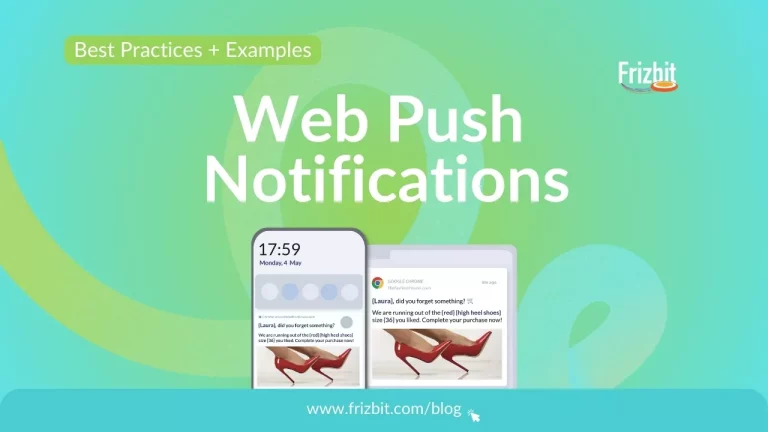The definitive elimination of third-party cookies is imminent. In less than a two year period, Google will join Safari and Firefox blocking them for good from their Chrome Browser. This means the digital marketing landscape will change dramatically and marketers need to start thinking outside the box and redefine the way they reach their customers.

Even though third-party cookies blocking it’s not new, the fact that Google is deciding to join other companies, puts the final nail to the coffin. Chrome is the most used web browser in the world. According to data from StatCounter “Chrome holds 64.92% of the global browser market. If we compare that to the number of internet users worldwide, we reach a figure of roughly 2.94 billion Chrome users in 2019”.
How do third-party cookies work?
Third-party cookies are generated by a different website from the one the user is currently visiting, and its data is mainly used for cross-site tracking that allow actions like retargeting ads or contextual display ads. If you think about it, this can easily be interpreted as 3rd party cookies being invasive and represent a very poor reflection of the user, given that they did not actually express any interest in the brand or product they’re being presented with.
On the other hand we have first-party cookies. These cookies are small bits of information gathered from users from the website they’re visiting at the time. The data stored, like language settings, allows these website’s owners to enhance user experience on the internet. Their main goal is to recognize each user, remember their preferences and ultimately offer a more personalised navigation.
Third-party cookies have been around for many years and have shaped the digital marketing world in many ways, helping brands to display ads to a more relevant audience. With their blocking, the biggest concern for marketers is the fear of not being able to reach potential customers, losing revenue and the overall alteration on how they track and retarget users.
Google has announced their intent to replace them with browser-based tools as part of their “Privacy Sandbox” initiative. They claim that “some data practices don’t match up to user expectations for privacy” and aim to build a more private web with this action.
The Sandbox initiative is a solution that limits the amount of user data exchanged through websites by anonymously aggregating user information and still ensuring that ads shown remain relevant for customers, whilst keeping a lot of data on-device only.
This initiative is still under development and Google is seeking industry feedback to keep on going. In the meantime and in addition to Google’s solution, since retargeting with third-party cookies will no longer be an option, what can be done about it?
The future of digital marketing without 3rd party cookies: How to face the cookieless Internet
The third-party-cookie-killing action that aims to create a more private and personal web experience for users, can even benefit publishers. Marketers could feel that losing them will leave an immense gap impossible to fill, but that might not be the case if they rethink first party cookies, optimize other marketing channels and create a multichannel marketing strategy.
1. Rethinking first-party cookies
“The more the merrier” might not be the case for the future of digital marketing. While third-party cookies allow retargeting a vast amount of prospective customers, thanks to cross-site tracking, first-party cookies offer marketers the possibility of sending relevant messages to the right people. First-party collected data should become a priority from this point forward.
Users that visit a site and agree to first-party cookies, are already saying that they find that content useful and of value, with an increased intent to buy or engage with the site when presented with a retargeting action like an ad.
Even though marketers will have less people to send their message to, the data gathered from users that accept first-party cookies will be much more valuable for businesses. It will allow marketers to create users’ profiles with more detail and design tailored retargeting campaigns to reach them.
The elimination of third-party cookies will make users feel they have more control over their experience online and how their personal data is handled and exchanged. This will translate into them being more open-minded to allowing first party cookies and this will benefit marketers in the long run.
2. Optimizing existing marketing channels
Digital marketing professionals that have been relying way too much on running ads based on the use of third-party cookies to reach their customers, need a mind shift. Mass targeted advertising will end as we know it and hopefully opens the door to a more personalised and comprehensive use of other traditional and diverse marketing channels that don’t require third-party cookies, such as web push notifications, emails, SMS, content marketing and contextual advertisement. If you have always been a 360° digital marketer, this won’t catch you off guard.
- Web push notifications present an all in one retargeting solution for online businesses. They obviously don’t need third-party cookies to work, but also don’t require users to share any type of personal data to subscribe. With this channel it’s possible to retarget anonymous users through every step of their shopping journey, outside of the site, with hyper-personalised messages based on their behaviour.

- Email and SMS marketing have always been very powerful channels to engage customers independently from third-party cookies. They offer the possibility of sending personalised information to users based on their behaviour on your site, such as abandoning carts. They’re also great to inform about special sales, promotions and discounts as a mass communication tool. Emails usually have great CTRs and are fairly easy to configure and use, as for SMS have very high open rates and great reachability.
- Content marketing is aimed into generating traffic, leads and building audiences through the creation of high quality and valuable content. It’s an oldie but a goodie of the digital marketing strategy, and nowadays a must-have for any brand or business. The focus of content marketing is to draw the users’ attention, making them visit your site and finally engaging with them without any requirement of third-party cookies.
- Contextual advertising is the digital equivalent of hanging a sneakers shoes ad in a sports store. It’s about being present where your customers are. One of the great benefits of using contextual advertising is that users find them more relevant and much less invasive than retargeting ads shown because of third-party cookies cross-site tracking. These ads are based on the content the user is consuming at that exact moment, instead of their overall internet behaviour, which makes them a lot more pertinent.
- People-based marketing uses specific data collected from one individual’s behaviour to identify them. It’s a more intelligent way to track customers and retarget them through relevant ads. Cookies are device-specific unless user id’s are merged, which means that, when a user browses a product in his work computer, and then purchases it from his phone, or changes browser, the retargeting footprints are lost. Businesses could be wasting a lot of money retargeting users that have already converted. People-based marketing avoids that by taking your customer’s data from your CRM and connecting it with all their online identities.
3. Create a multichannel marketing strategy
All of the mentioned tools have greater power if combined in a seamless multichannel marketing strategy. It’s a practice where interaction between brands and customers take place throughout different communication platforms. Reaching out to users through a variety of channels increases the opportunities of engaging with them.

A correct combination of different tools will allow you to connect with your customers on a deeper level. You have to be present where they are, and the best way to reach them is designing different messages that adapt to both the characteristics of each marketing channel and your user’s needs.
If you depend too much on third-party cookies, your digital marketing strategy will fall short and you’ll be missing out on hundreds of possibilities to engage with your audience. Combine emails, web push notifications, content marketing and any other cookie-independent channel that fits you to increase your brand awareness, reach new customers and retain existing ones.
Cookieless future is not so dark
The news of Google eliminating third-party cookies might have come like a hard blow to many digital marketers. However, we think of it as an opportunity to sharpen our strategist skills and seize the advantages offered by more detailed data of specific customers that are willing to share it with us.
In times of hyper-personalisation, and with all the cookieless channels available, there’s no excuse for not doing our best as digital marketing professionals to better understand our customers’ expectations and respond accordingly.
People are seeking a balance between privacy and personalisation. So, an internet without third-party cookies might be what’s missing from the equation. Users want to receive suggestions about services or products they might like, but they also want to have a say on how and why these messages reach them.
Brands have to focus on being genuine and building trust with their customers. If users feel their personal data is used to actually improve their experience online, and not just for businesses’ private agendas, they’ll be more willing to share it. The disappearance of third-party cookies might help them understand why their information is so important for online businesses.
There’s still time to prepare for the final elimination of third-party cookies: focus on giving customer privacy the importance it deserves and on creating well-rounded multichannel marketing strategies to deliver relevant messages.
Here are some articles that might help you reshape your digital marketing strategy and be ready for Google eliminating third-party cookies:




